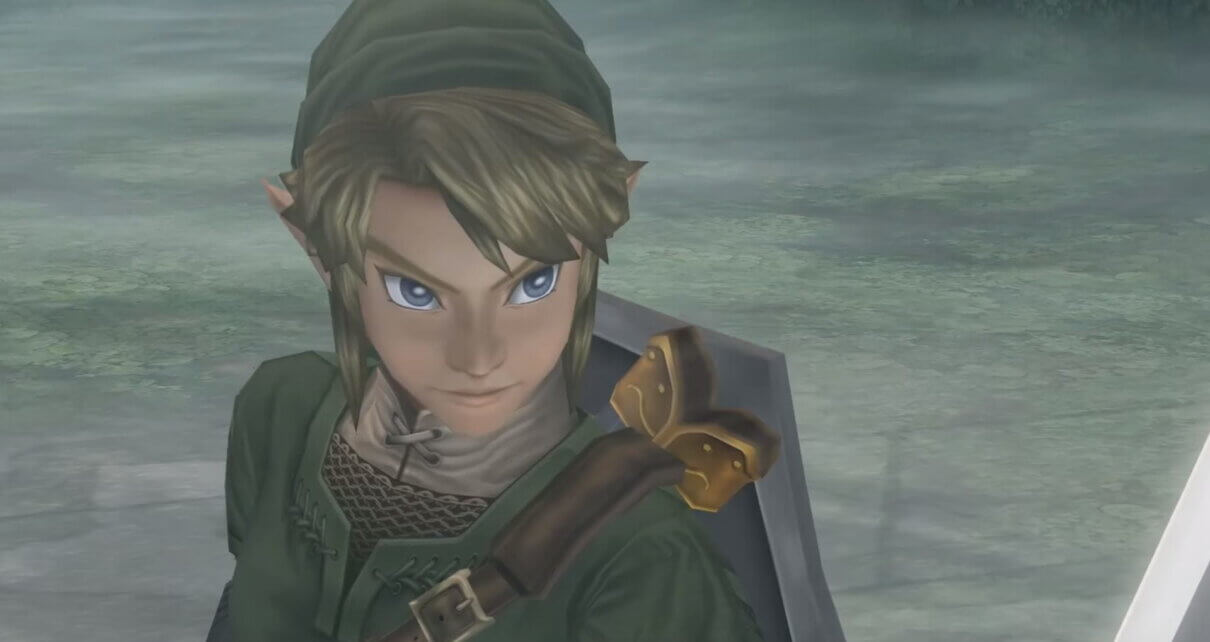This month, my favorite video game of all time, The Legend of Zelda: Twilight Princess, turns fifteen years old.
For years, I’ve wanted a justification to cover this masterpiece in writing; journalistic integrity be damned.
So, before I hand the reins to another excellent writer and editor, I decided to take a deep dive into why Twilight Princess is such an active force in my life, in addition to how it has made gaming all the better for its uniqueness.
Fifteen years ago, Nintendo released what was then hailed as perhaps the best game in the Legend of Zelda franchise. It came out paradoxically first on the Wii and then on the GameCube, and it truly felt like an Gothic open-world game before “open-world” was in the public consciousness for video games.
Yet it seems like too few people today adore The Legend of Zelda: Twilight Princess like I do; maybe I’m biased. Regardless, my favorite video game for so much of my life is a dark and dense masterpiece. And, now that it is (as of this month) a fifteen-year vintage, I think I’ll take the time to elucidate why Twilight Princess is celebrated for its excellence, and why it holds up so strongly today.
Twilight Princess was mostly lucky as far as release dates are concerned; it arrived in 2006 on two Nintendo consoles almost-simultaneously; first as a sort of “maternity gift” for the newly-minted and as-yet monumental Wii; second as a somber sendoff to the sleeper system that was the GameCube.
One of the most interesting and unusual differences between the two versions is in the display. To bring an intriguing set of trivia into the conversation: the hero, Link, in all previous incarnations, is left-handed. However, the Wii, with its new and unprecedented handheld motion controllers, is in most cases intended to be played in a right-handed configuration.
Therefore, to make up for this inconsistency, instead of flipping the actual avatar of Link and making only him a righty, the developers flipped the entire game environment, along with Link’s character model. This resulted in perhaps one of the hallmark quirks of Twilight Princess: the GameCube and Wii versions are literal mirror images of one another.
Minutia aside, there’s a subtle and ever so lachrymose thread which runs through the whole game. Twilight Princess begins at dusk in the bucolic village of Ordon. A young rancher, Link, is tasked with delivering a gift to the royal family of Hyrule in three days’ time; a sword and a wooden shield.
But the night before Link is to set out, a group of beasts arrive and kidnap him and the young children of the village.
When next we see Link, he is taken over by a strange power and transformed into a wolf. Chained in a subterranean dungeon, and with the entire overworld blanketed in an unnatural-feeling light, we are met with a little green, black, and white imp wearing a stone mask.
She calls herself Midna, and she promises to help us return to Ordon and find the kids in exchange for helping her find an “ancient power,” thus into a wolf at will, with Midna becoming more and more of a compatriot every step of the way.
And I didn’t even need to look any of that up. I just love this game that much. There’s a whole lot to love, at that.
Though there is a darkness that pervades everything the player does, the character models are nevertheless some of the most endearing I’ve seen in any game to this day.
The game does an excellent job visually of conveying characters’ personalities and backgrounds. The children of Ordon are all barefoot and clad in agrarian tunics, while the people of Hyrule Castle Town wear more colorful and metropolitan-looking outfits, complete with closed-toe shoes.
As for the other main cast member; I believe it’s a —consensus in the Zelda fandom that the least irritating/most lovable partner character in the franchise is Midna. At first she presents as she looks; impish, mischievous, and more of a side character than anything. But this little gremlin has truly benevolent intentions, despite trying to take Link’s latent power for herself; she is the deposed leader of her land, the Realm of Twilight—a veritable Twilight Princess—who herself was transformed into a small and elfin beast.
As the plot advances, Link and Midna come to realize that their disparate circumstances and goals actually align with each other, leading to a lovely—if fantastical—portrayal of the intimate friendships that can form between young adults, even when evil taints the world in which they live.
But evil is a theme which itself is delicately dichotomized in Twilight Princess. The main antagonist, Zant, is a Twili (not incidentally the same race as Midna) who usurped Midna’s throne.
Each time he shows himself, Zant gradually becomes more and more unhinged, devolving from a grotesquely ornate nobleman into a madman under the spell of something far more sinister; for a game that’s rated T, Zant creeped me out severely as a child.
If Zant represents the fiendish madman archetype, then Ganondorf the Dark Lord represents cold, precise evil; evil which is by its very nature unfathomable.
The way that Ganondorf is depicted in-game is, compared to his previous incarnations, both the most measured and most malevolent being I’ve yet seen.
I spare no hyperbole when I say he’s one of the most purely evil antagonists in modern media—for Heaven’s sake, he was banished to a literal other dimension as punishment for his crimes because he could not physically be executed.
Besides the characters, though, the dungeons of Twilight Princess are and remain a revelation in level design.
Take the Arbiter’s Grounds, for one. This stone bastille on the outer ring of the desert was a massive gaol saved for the condemned; for the worst criminals Hyrule ever saw.
In the temporal setting of the game, though, the Arbiter’s Grounds are long-abandoned, and boy is that conveyed by the atmosphere: spectral rats and decomposing warriors roam the halls of the once-occupied prison, and sand flows like water from every crack in the walls.
It truly feels like you’re exploring a deserted prison; at the end, you find a lifeless skeleton—that of some demonic-looking goat beast—with Zant standing atop the skull.
It is here where the player gets a glimpse of the type of power held by the leader of the Twili, as he uses his dark magic to revive this massive fossilized roadblock.
Speaking of which, I’d be remiss if I didn’t shout out the spinner, which is one of the best items in the game. The spinner is, put simply, a huge top with gear-like teeth on its rim. It has multiple uses, but by far my favorite and the one which has also ensconced it as a fan-favorite is its uncanny ability to glide up vast spiral tracks lining the walls of the Arbiter’s Grounds, much like a percarious roller coaster. This ride is made all the more fun when you’re made to jump off the track and bounce off the head of a skeleton monster, but I digress.
The aesthetic of the game, given the bold and dark atmosphere, is held up by the high stakes of the story and the seamlessly transitioning musical score, as well as the themes of duality and human nature; much more existential topics than are normally woven into these games.
That being said, the way the art is directed is masterful, especially for a game released in 2006. Huge landscapes with plenty of small mysteries strewn about combine into something that was and still is so liberating.
As the world opens up to the player, one feels a strange nostalgia for home; as Ordon Village becomes more distant and the land of Hyrule more navigable, the player too is forced to grapple with the fact that life sometimes doesn’t get easier. Truthfully, there are sometimes great things at stake which make it all too hard to ignore that fact.
But there is hope, no matter how gloomy or twilit the coming days may seem. Our protagonist Link suffers through a whole hell of a lot of pain. And, sure, he isn’t real; nor are his surroundings or the magical world within which he lives.
But the way in which that young Hylian is forced to grapple with the world’s most profound evils stands as one of gaming’s most grounded portraits of seemingly endless struggle; time has quite literally bound Link, Ganondorf, and Princess Zelda to each other, and their descendants after them to each other.
Terrible times and strife do happen. They may be happening now to any one of us. And they will keep happening, whether we want them to or not; that’s how time operates.
But even if we can’t avoid evils coming into our lives, there is always that next action to take, that next secret alcove to uncover, those people to inspire us, and time to heal old wounds; as I’ve grown older, I think that may be the most important thing I’ve taken from this grand opus of a video game into my own life.




